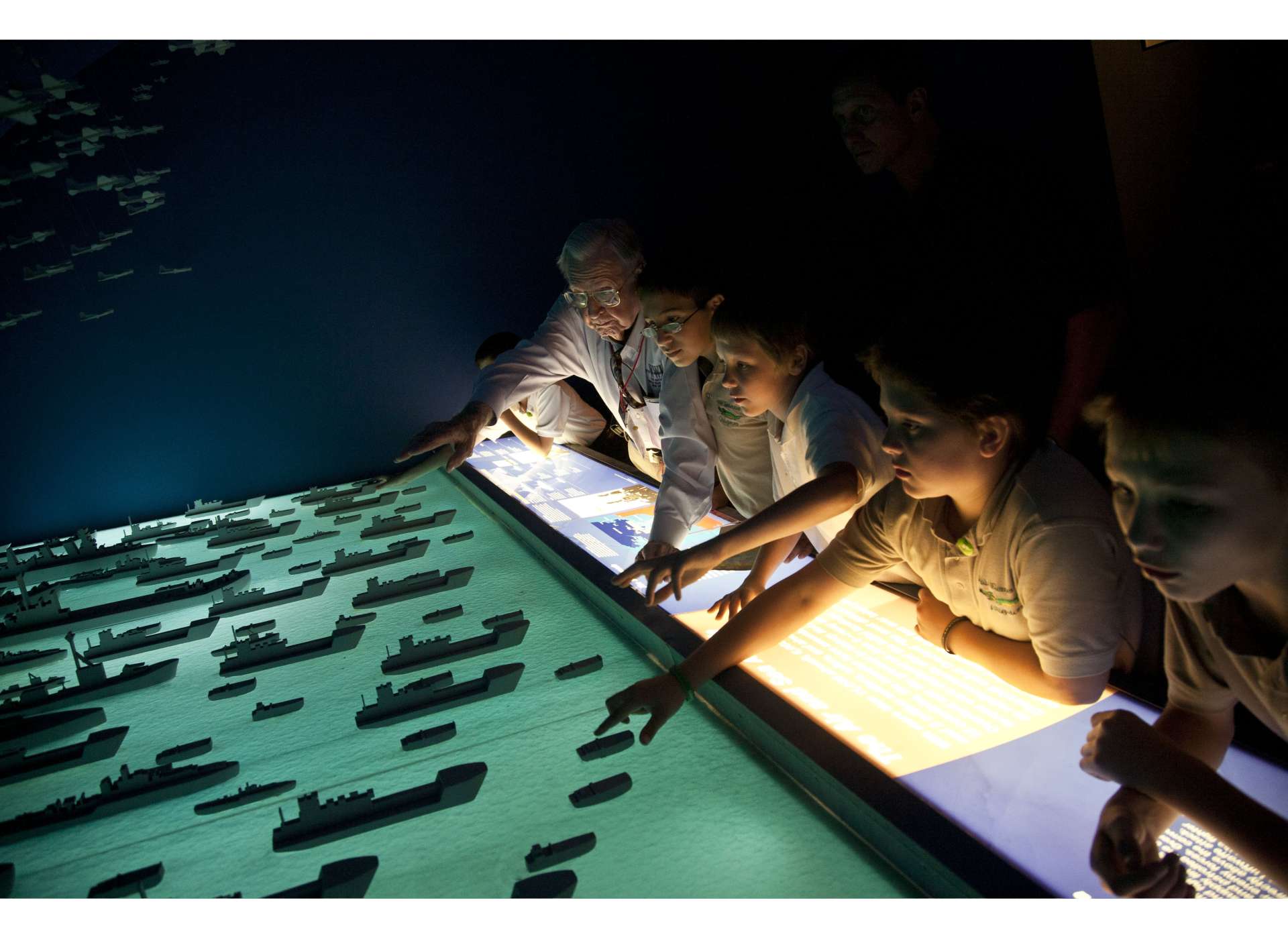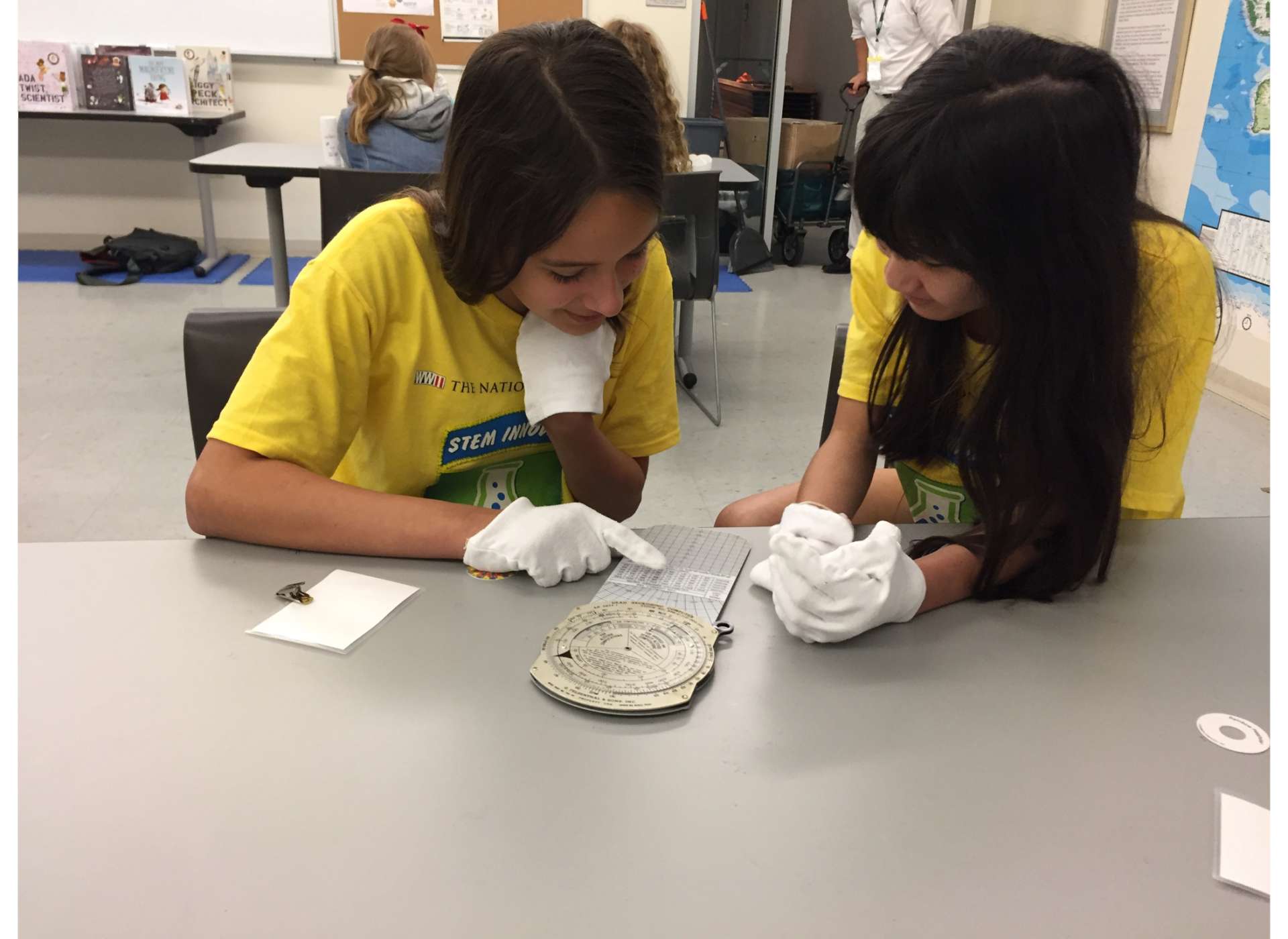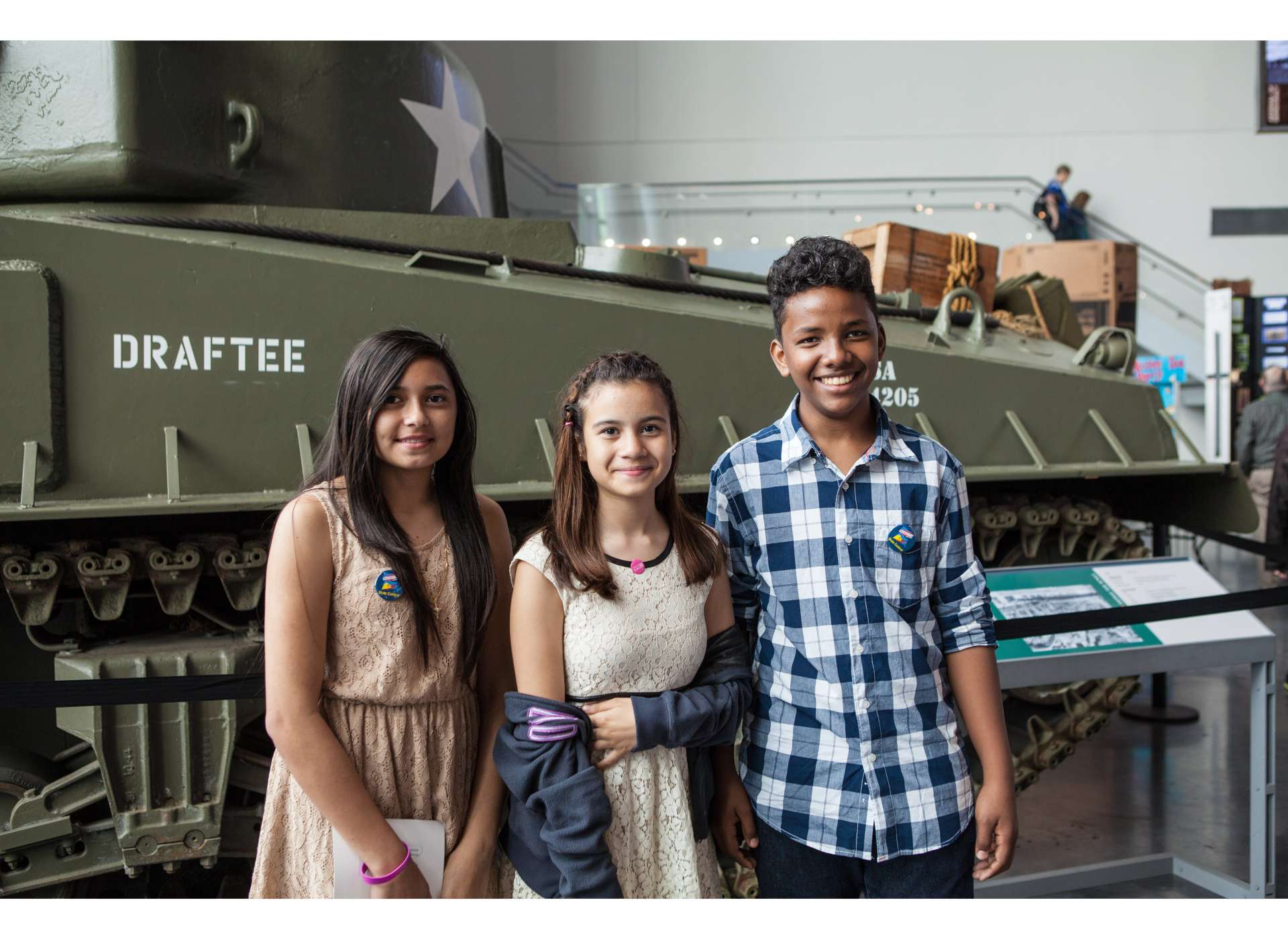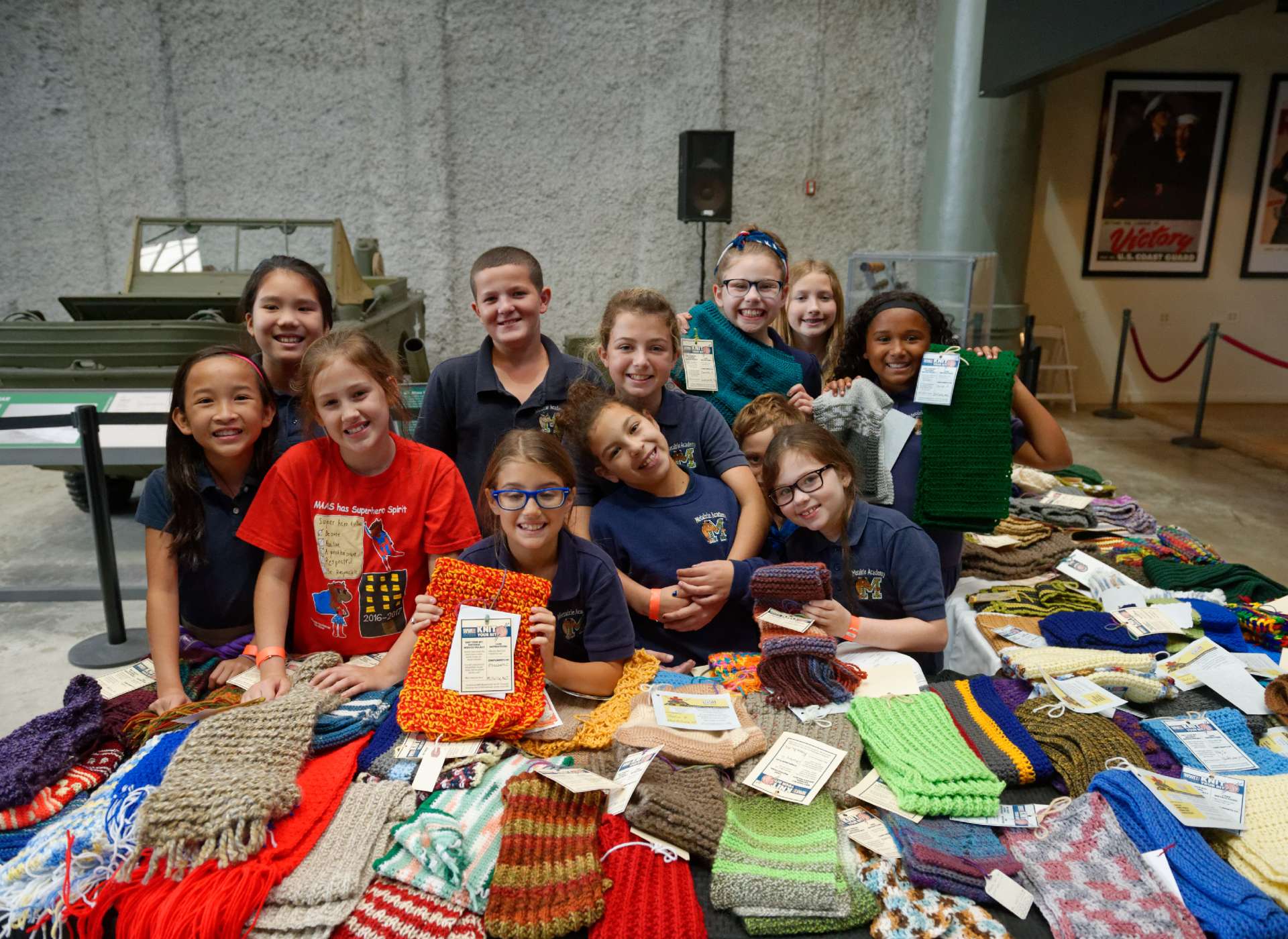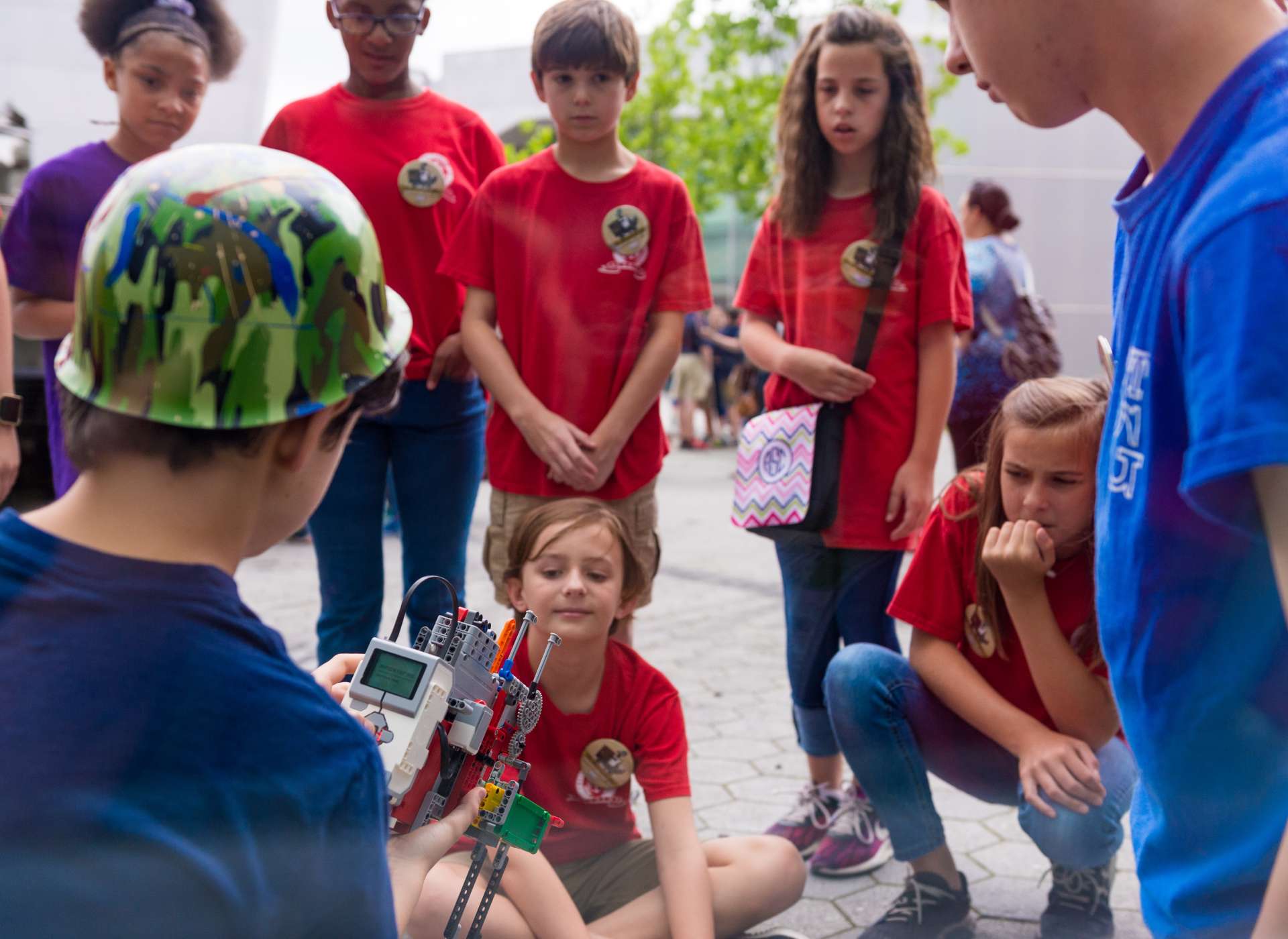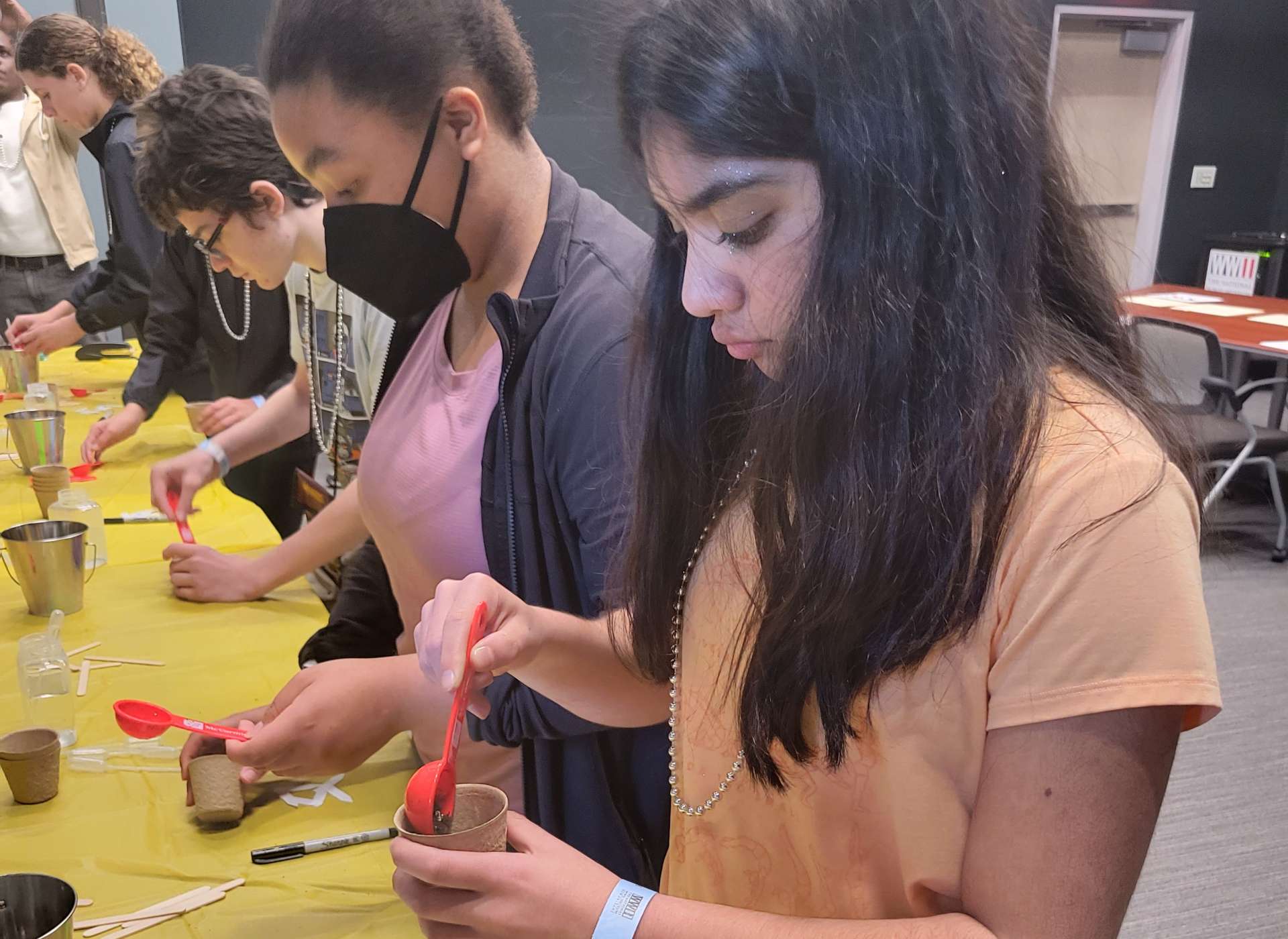PLAN YOUR FIELD TRIP TODAY!
The National WWII Museum offers an exciting, educational experience for students and teachers alike. One adult chaperone per every 10 students is required for all student groups. Please read the following information and then contact our Sales office by calling 504-528-1944 x 222 or emailing group.sales@nationalww2museum.org.
The Education Department at The National WWII Museum helps you explore the history and lessons of World War II. Museum field trips incorporate object-based learning, educational technology, and world-class exhibits. The Museum’s rich collection of artifacts, archives, and oral histories take history beyond the textbook and into the hands of curious students.

Limited Title I funding is available for Louisiana Title I schools on a first come, first served basis.
- Maximum 60 students and six chaperones per school.
- Any additional students and chaperones subject to group rates.
- Funding available for Museum admission only; Beyond All Boundaries and Final Mission not included.
- Contact Group Sales to make your reservation.
Field Trip Plus is a 45-minute Museum educator-led interaction for student groups in 3rd through 12th grade. Humanities/Social Studies and STEM sessions are available.
A session can be added to a Museum field trip at no additional cost. All sessions are subject to availability and are offered at 10:00 a.m. or 11:00 a.m. on Tuesdays and Thursdays or 1:00 p.m. on Wednesdays. Advanced reservation is required. The topic must be chosen when booking your visit. It is possible for some sessions to be presented to additional grade levels if requested at booking. Chaperones are required to be present during the field trips at a minimum ratio of one chaperone to 10 students.
The Museum firmly believes that the story of World War II must include the story of the STEM professionals and the innovations that they made possible during the War. Each of the STEM Field Trip Plus options relates to Louisiana Student Standards for Science as well as Next Generation Science Standards (NGSS).
All Humanities/Social Studies Field Trip Plus sessions foster a variety of skills and practices that correlate to the 2022 K–12 Louisiana Student Standards for Social Studies:
6-8./9-12.SP1.
Examine sources in order to:
A. distinguish between primary, secondary, and tertiary sources B. determine the origin, author's point of view, intended audience, and reliability C. explain the meaning of words, phrases, and content-specific vocabulary.
6-8./9-12.SP2.
Use a variety of primary and secondary sources to:
A. analyze social studies content B. evaluate claims, counterclaims, and evidence C. compare and contrast multiple sources and accounts D. distinguish between historical facts and historical interpretations.
Topics Offered
Forces of Flight (STEM)
Students will participate in an engineering challenge inspired by a story of innovation and ingenuity during World War II. They will design and test their own model helicopters to investigate the interaction between the forces of flight.
Target Grades: 3rd–5th
Maximum Number of Students: 30
Louisiana Student Standards for Science:
- 3-PS2-1 Plan and conduct an investigation to provide evidence of the effects of balanced and unbalanced forces on the motion of an object. (NGSS 3-PS2-1)
- 5-PS2-1 Support an argument that the gravitational force exerted by Earth on objects is directed down. (NGSS 5-PS2-1)
Next Generation Science Standards:
- 3-5-ETS1-1 Define a simple design problem reflecting a need or a want that includes specified criteria for success and constraints on materials, time, or cost.
- 3-5-ETS1-2 Generate and compare multiple possible solutions to a problem based on how well each is likely to meet the criteria and constraints of the problem.
Magnetic Maneuvers (STEM)
Students will explore magnetic fields, forces, and interactions to complete a design challenge inspired by World War II era technology.
Target Grades: 6th–8th
Max Number of Students: 30
Louisiana Student Standards for Science:
- 6-MS-PS2-3 Ask questions about data to determine the factors that affect the strength of electric and magnetic forces. (NGSS MS-PS2-3)
- 6-MS-PS2-5 Conduct an investigation and evaluate the experimental design to provide evidence that fields exist between objects exerting forces on each other even though the objects are not in contact. (NGSS MS-PS2-5)
Next Generation Science Standards:
- MS-ETS1-2 Evaluate competing design solutions using a systematic process to determine how well they meet the criteria and constraints of the problem.
Operation Footlocker (Humanities/Social Studies)
This session offers students the opportunity to learn more about World War II through a hands-on exploration of primary source artifacts.
Target Grades: 6–12
Max Number of Students: 30 students per session
Additional Louisiana State Social Studies Standards:
- 8.14 Describe the causes, course, and consequences of World War II.
- L. Explain how life in the United States changed during and immediately after World War II, with an emphasis on wartime production and the workforce, rationing, conservation, victory gardens, financing through war bonds, propaganda campaigns, and the Servicemen's Readjustment Act (GI Bill).
- US.15 Explain the causes, course, and consequences of World War II.
- F. Explain how the U.S. government managed the war effort on the home front, including campaigns to conserve food and fuel, sale of war bonds, and coordination of wartime production.
Pelican State Goes to War (Humanities/Social Studies)
Students examine the state’s defense industries and learn how Louisiana helped to win the war. Students discover the magnitude of Louisiana’s involvement in the Allied war effort and learn about those who contributed to victory on the battlefield and on the Home Front.
Target Grades: 7th–12th
Max Number of Students: 50
Additional Louisiana State Social Studies Standards:
- 8.14 Describe the causes, course, and consequences of World War II.
- J. Explain the sacrifices and contributions of U.S. soldiers during World War II such as the Tuskegee Airmen, the 442nd Regimental Combat team, the 101st Airborne, Cajun “Frenchies,” the Women's Army Corps (WAC), and the Navajo Code Talkers.
- K. Analyze how Louisiana contributed to the war effort during World War II and the effects of the war on Louisiana, including the role of the Louisiana Maneuvers, Higgins Boats in the success of the Allies, and prisoner of war (POW) camps in Louisiana. Students examine the state’s defense industries through primary source investigation and learn how Louisiana helped to win the war. Students discover the magnitude of Louisiana’s involvement in the Allied war effort and learn about some of the people who contributed to victory on the battlefield and on the Home Front.
See You Next Year! High School Yearbooks from World War II (Humanities/Social Studies)
Students examine selected yearbooks to better understand attitudes toward race and gender during World War II.
Target Grades: 9th-12th
Max Number of Students: 50
Additional Louisiana State Standards:
- US.15 Explain the causes, course, and consequences of World War II.
- D. Describe the sacrifices and contributions of American service members in the war effort including the Tuskegee Airmen, Military Intelligence Service, 442nd Regimental Combat team, the 101st Airborne, Women's Army Corps (WAC), Navajo Code Talkers, and the Army Signal Corps.
- F. Explain how the U.S. government managed the war effort on the home front, including campaigns to conserve food and fuel, sale of war bonds, and coordination of wartime production.
Sowing Seeds for Victory (Humanities and STEM)
Students learn about Victory Gardens and other ways that young people contributed to the war effort. They analyze Victory Garden propaganda and create their own gardening propaganda on seed packets.
Target Grades: 4–7
Max Number of Students: 30
Additional Louisiana State Social Studies Standards:
- 8.14 Describe the causes, course, and consequences of World War II.
- L. Explain how life in the United States changed during and immediately after World War II, with an emphasis on wartime production and the workforce, rationing, conservation, victory gardens, financing through war bonds, propaganda campaigns, and the Servicemen's Readjustment Act (GI Bill).
- US.15 Explain the causes, course, and consequences of World War II.
- F. Explain how the U.S. government managed the war effort on the home front, including campaigns to conserve food and fuel, sale of war bonds, and coordination of wartime production.
Louisiana Student Standards for Science:
- 5-LS1-1 Ask questions about how air and water affect the growth of plants. (NGSS 5LS1-1)
- 6-MS-LS2-1 Analyze and interpret data to provide evidence for the effects of resource availability on organisms and populations of organisms in an ecosystem. (NGSS MS-LS2-1)
“Where Have You Been?”: The US and the Holocaust
Students will listen to Holocaust survivor testimony and analyze primary sources to construct a timeline of American knowledge of the Holocaust.
Target Grades: 8–12
Max Number of Students: 30 students per session
Additional Louisiana State Social Studies Standards:
- 8.14 Describe the causes, course, and consequences of World War II.
- A. Explain the rise and spread of militarism and totalitarianism internationally, examining the similarities and differences between the ideologies of Imperial Japan, fascist Italy and Nazi Germany, and the communist Soviet Union, as well as the origins and effects of violence and mass murder in the 1930s and 1940s as demonstrated by the Nanjing Massacre, the Holodomor, the Holocaust, and treatment of political opponents and prisoners of war during World War II.
- B. Describe the acts of aggression leading to World War II in both Europe and Asia, and explain the effectiveness of policies and reactions, including the policy of appeasement towards Nazi Germany
- G. Explain the causes and consequences of the Holocaust, including antisemitism, Nuremberg Laws restricting civil rights, resistance efforts, experiences of people including Anne Frank, concentration camp system, liberation of camps by the Allies, and Nuremberg trials.
- US.15 Explain the causes, course, and consequences of World War II.
- J. Explain the use of violence and mass murder as demonstrated by the Nanjing Massacre, the Holodomor, the Holocaust, and the Bataan Death March and the treatment of U.S. prisoners of war.
- K. Analyze the Holocaust, including the suspension of basic civil rights by the Third Reich, concentration camp system, antisemitism, persecution of Jews and non-Jews, Jewish and non-Jewish resistance, the role played by the United States in liberating Nazi concentration camps, immigration of Holocaust survivors, and the Nuremberg trials.
Exhibit Worksheets are available for a variety of Museum galleries. Please download and print the following worksheets to use while exploring The National WWII Museum.
We are excited to offer school groups the opportunity to perform here at the Museum. Admission must be purchased for a school band or choral group to perform. Groups must perform upon arrival. Performances will be held outdoors on Museum campus subject to weather. The Museum has ongoing construction through 2024.
This may be arranged through Group Sales at 504-528-1944 x 222 or group.sales@nationalww2museum.org.
2023–2024 PERFORMANCE GUIDELINES
- The Museum will allow a maximum of 75 student performers.
- Performance time is limited to 30 minutes.
- No amplification or instruments requiring power are allowed.
- All performances to occur only on weekdays throughout March–May.
- The Museum is not a performance venue; however, we do welcome performance groups to perform outside on Founder’s Plaza.
- The Museum does not have space for instrument storage or for groups to change clothes before or after performing.
- All performances are open to the public and will be held outdoors on the Museum’s campus, subject to weather.
- Chairs provided upon request.
- Flag bearers/baton majorettes may not perform.
- 1940s, swing, and/or patriotic music is preferred.
Group Dining:
Catered group boxed lunches are available for purchase. Please notify our Group Sales team when you book your field trip if you are interested in adding on to your Museum visit. Minimum order of 10 is required. Hot and cold options available. Strongly recommended for groups. Contact 504-528-1944 x 222 or group.sales@nationalww2museum.org to make your reservation and add on a boxed lunch.
On-campus dining options available for individual purchase:
The American Sector Restaurant & Bar: Open daily, 11:00 a.m. – 2:00 p.m.
Enjoy victory with every bite with our victory garden-to-table menu for lunch. Full service restaurant & bar.
Jeri Nims Soda Shop: Open daily, 8:00 a.m. – 3:00 p.m.
Casual counter service. Stop in at any point during your visit for breakfast, a quick sandwich, or a sweet treat!
Details
Click below for additional information.
Scheduling a Group
Please contact Group Sales to schedule your visit at least one week in advance to determine if your desired visit date is available. Peak months for groups are March, April, and May. For tour groups, the Museum offers complimentary admission for tour escort and driver. Youth groups are required to have one chaperone for every 10 kids.
We suggest a minimum of four hours to view Museum galleries. Groups may also add the 4D cinematic experience Beyond All Boundaries and perform as crew members in Final Mission: USS Tang Submarine Experience for an additional fee, subject to availability. Group Sales will also be happy to assist you with BB's Stage Door Canteen group reservations and/or group lunch and dinner options at the Museum.
To plan your group visit or for more information, please call 504-528-1944 x 222 (toll free 1-877-813-3329 x 222) or email group.sales@nationalww2museum.org.
Hours and Accessibility
Museum Exhibits & Museum Store
Open daily 9:00 a.m. – 5:00 p.m.
Beyond All Boundaries at The Solomon Victory Theater
Sunday – Saturday: 10:00 a.m. – 4:00 p.m.
Showtimes on the hour
Final Mission: USS Tang Experience
Sunday – Saturday: 11:15 a.m. – 2:35 p.m.
Show times at 15, 25 and 55 after the hour
The American Sector Restaurant + Bar
Sunday – Saturday: 11:00 a.m. – 4:00 p.m.
Jeri Nims Soda Shop
Sunday– Saturday: 8:00 a.m. – 3:00 p.m.
All venues are closed Mardi Gras Day, Thanksgiving Day, Christmas Eve, and Christmas Day.
Accessibility
The Museum is fully ADA accessible to all visitors. A limited number of wheelchairs are provided for use in the Museum at no charge.
Payment and Cancellation
Payment is required 72 hours in advance of arrival. There should be one designated group leader to process payment for the group before arrival and for check in at the Museum’s ticket counter for the day of the visit. The Museum does not provide direct billing or receive purchase orders for payment. Payment for group meals should be handled by American Sector Catering prior to arrival.
Please notify us as soon as possible in writing to cancel an existing group reservation. Group visit cancellations within 72 hours of the group arrival are nonrefundable.
Parking and Directions
The Museum provides an unloading/loading zone only for buses along Magazine Street (GPS address: 945 Magazine Street, New Orleans, LA 70130). Museum staff will issue the bus driver a parking pass for complimentary parking two blocks down Magazine Street under the I-10 overpass. Buses are not allowed to unload/load on Andrew Higgins Drive in front of the Museum due to safety hazards. Paid car parking is available in Museum ‘s parking garage located at 1024 Magazine Street.
OUR CAMPUS
Designated by Congress as the official WWII museum of the United States, The National WWII Museum is located in downtown New Orleans on a six-acre campus, where six soaring pavilions house historical exhibits, on-site restoration work, a period dinner theater, and restaurants.

Group Visits
The Museum provides one of the most unique group experiences available. Group rates offered for 10 or more guests.


